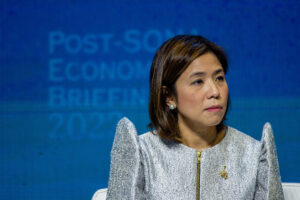DBM may slash budget of agencies with low utilization rates

THE DEPARTMENT of Budget and Management (DBM) may consider slashing the budget allocations for government agencies with low utilization rates.
“Given our really small fiscal space, we need to instill discipline in our National Government agencies so we can put the money to agencies who can really implement them,” Budget Secretary Amenah F. Pangandaman told reporters on Monday.
She said the DBM will “cut” the budget of agencies with low budget utilization.
Data from the DBM showed the government’s cash utilization rate was at 94% as of end-October.
The National Government, local governments and state-owned firms used P3.36 trillion out of the P3.56 trillion in Notice of Cash Allocation (NCA) issued to them in the January-to-October period.
Line departments used 92% or P2.27 trillion of their NCAs as of the end of October, leaving P201.42 billion unused.
The Commission on Human Rights was the only department to post a budget usage rate at 100%.
On the other hand, the Department of Information and Communications Technology (DICT) recorded the lowest rate at 67%.
“If there’s a question why the DICT budget is quite low, it’s because there’s still an existing budget from previous years that can still be used,” Ms. Pangandaman added.
Meanwhile, the government’s funding releases at the end of October hit P5.08 trillion, exceeding the P5.024-trillion budget for the year.
This was mainly due to P200.19 billion in unprogrammed appropriations and P45.29 billion in other automatic appropriations.
Ms. Pangandaman said that the government is not worried about overspending or exceeding its budget cap as its deficit is still within target.
“We’re still within the target, and I am happy with that, because at least the agencies now are trying to use the money and utilize it better to implement their projects… maybe it’s also a reason that the economy is open and then we’re trying to push for them (to utilize their budget more),” she added.
The National Government’s fiscal deficit stood at P179.8 billion in September, versus the P180.9 billion a year earlier and the P72 billion in August.
In the nine-month period, the deficit-to-GDP ratio stood at 6.5%, still below the government’s 7.6% target by yearend.
Ms. Pangandaman said there are no projections yet for additional fund releases for the rest of the year.
“We can still implement and can push (this) before the end of the year. We can still work on that,” she added.
There is also a possibility of upgrading the government’s growth targets, after the faster-than-expected economic expansion in the third quarter, Ms. Pangandaman said.
“Probably, with the numbers we have now. And everything is open now, so maybe,” she added.
The Philippine economy expanded by 7.6% in July to September, slightly faster than the revised 7.5% growth in the second quarter and 7% a year earlier.
Economic managers earlier said the stronger-than-expected third-quarter growth makes it likely the Philippine economy will exceed the 6.5-7.5% full-year target.
The DBM said it is also pushing for digitization for effective financial management.
“This is crucial as greater collaboration and innovation on public service delivery is even more pronounced now as the public demands for a more responsive government, quick to deliver as we cushion the unprecedented impact of the pandemic,” she said.
Ms. Pangandaman said this can be achieved by pushing for citizen participation, investing in digital innovations, and fast-tracking the rollout of data systems. — Luisa Maria Jacinta C. Jocson




